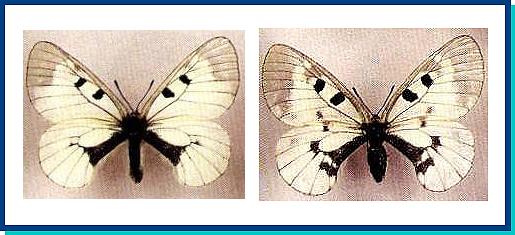LEPIDOPTERA
PAPILIONIDAE Latreille,1802
PARNASSIUS Latreille,1804
Parnassius mnemosyne Linnaeus, 1758

Parnassius mnemosyne weidingeri Bryk et Eisner, 1932
· RANGE. The whole of Europe, across the Caucasus to the Middle East and eastwards across Iran, Afghanistan and Middle Asia to W. Siberia.
· DISTRIBUTION AND VARIATION. A widespread though local butterfly species with a vast range of geographical and individual variation. The bulk amongst the great number of proposed subspecific names seem only junior synonyms. Therefore, only some most distinctive subspecies are listed here: ssp. weidingeri Bryk et Eisner, 1932 - the central European part; ssp. craspedontis Fruhstorfer, 1909 the S. European part, ssp. ucrainicus Bryk et Eisner, 1932 - the W. European part; ssp. ugrjumovi Bryk, 1914 the Middle Volga basin and the Middle Urals; ssp. uralka Bryk, 1921 - the S. Urals; ssp. nubilosus Christoph, 1873 - the Caucasus and Transcaucasia; ssp. problematicus Bryk, 1912 - Kopet-Dagh; ssp. orientalis Verity, 1911 N. Tian-Shan; ssp. falsus Pagenstecher, 1911 N. Tian-Shan (Ketmen Mt. Range); ssp. nivalis Grose-Smith, 1908 - Inner Tian-Shan; ssp. valentinae Sheljuzhko, 1943 W. Tian-Shan; ssp. giganteus Staudinger, 1886 - Alai; ssp. ochraceus Austaut, 1891 - Ghissar (east); ssp. bucharanus Btyk., 1912 - Ghissar (west).
· HABITATS AND BIOLOGY. Open habitats with mesophilous vegetation, in the mountains up to 3,000 m or even higher (the W. Pamirs). Flight period: April-July depending on climatic conditions. Eggs or larvae of different instars hibernating. Host plants: Corydalis spp. Pupation takes place in the litter inside a dense cocoon.
Photo and text: Guide to the BUTTERFLIES OF RUSSIA and adjacent territories Volume 1. PENSOFT, Sofia - Moscow. 1997